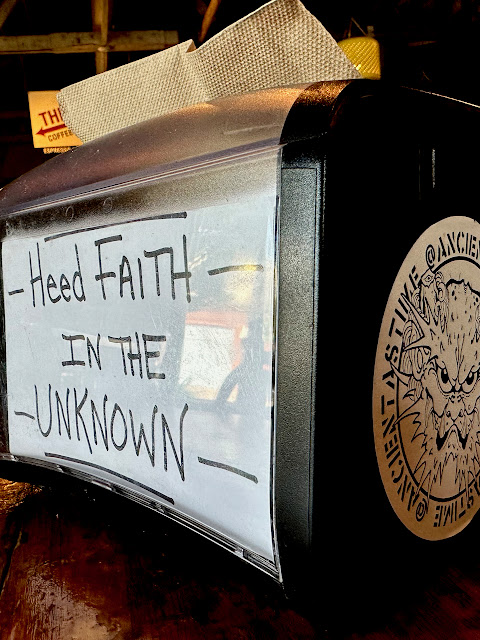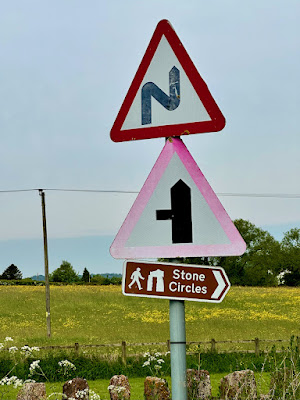There lives within us all an unspoken dream, a kind of secret belief that something can exist that will not disappear, an imprint that will endure.—Laurent Olivier
In the early-to-mid 16th century, this stone was carved and laid in a religious building. The original location is unknown. Today the stone is placed horizontally above the fireplace in Relish Bakery on Long Street, the main street of Wotton-under-Edge, Gloucestershire.
When I inquired about the stone — 91” in length, 34” in breadth, 4 1/2” thick —the info sheet (below) was kindly provided by the Relish Bakery owner. I asked to photo; the Relish Bakery owner graciously pulled back dangling cords.
The inscription:
Hic ia(ce)t Marger(y) Mershe
Que obit Quarto Die Mensis Jan
Anno D(o)m(in)i
Millino CCCCC Ivi
Cuie anime p(ro)picietur Deus
Amen.
Here lies Margery Marshe
Who died the fourth day of the
month of January in the Year of
Our Lord, one thousand, five hun-
dred and fifty six
On whose soul may God have
mercy. Amen.
In the centre of the cross are the letters I H S, the first three letters of the name of Jesus in Greek.
Details (click to enlarge):
— “The people of Wotton in the mid-16th century had strong Protestant leanings. Isabel Denny was burnt for her faith in Old Town in 1555.”
— “Could such an obviously"Catholic" stone have been displayed openly in the main street of Wotton without causing censure? but we do not know when it was first put on display.”
NOTES
— Laurent Olivier, The Dark Abyss Time: Archaeology and Memory (2011); trans Arthur Greenspan
— Relish Bakery, Helen Woodward & Sophie Trull, 36 Long Street, Wotton-under-Edge, Gloucestershire. — Wotton-under-Edge — Name from Timeline: Year 940: King Edmond’s Charter mentions Wudetun (the settlement in the wood). Year 1086: Domesday Book shows Vutune as a dependency Of Berkeley.
CODA
I boarded the local Stroud-Woodchester bus a fine May morning this year intrigued by the Wotton name. As was revealed as we descended the Cotswolds escarpment — the Under-Edge — into a sharp valley leading to the Severn plain north of Bristol. Also, curious about a rural 12th century church with a Norman-era tower, an unusual irregular hexagon, a three-mile upcountry walk east of town up-and-over-the edge to the Ozleworth Estate. St Nicholas of Myra’s Church, a consecrated church no longer in use (redundant) open to the public, though clearly with infrequent visitors. Photo: Interior ceiling of tower.

















.jpeg)






.jpeg)
